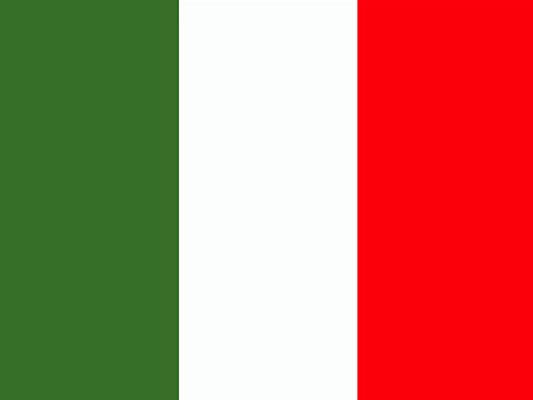

Riviera Zadar occupies northern Dalmatia, ie the central part of the Croatian coast, starting with Nin in the north and all the way to Biograd in the south.
1200 km of coastline and about 365 islands (it also has wide hinterland) make Riviera Zadar a unique island phenomenon in a small area.
The most beautiful island group in the Adriatic Sea is a true paradise for yachtsmen but also those who want to experience the charms of Robinson Cruise - like life, explore and discover new isolated coves and beaches, but also have a good time, interesting natural and historical sights, and attractive beaches all at reach of hands.
The most famous historical region of the Republic of Croatia is dominated by the city of Zadar, which is also the center of north Dalmatia.
In addition to Zadar, there are about 30 tourist destinations and towns some of which are on the mainland and some on surrounding islands: Bibinje, Biograd, Diklo, Nin, Pakoštane, Petričane, Starigrad, Paklenica, Sukošan, Sv. Filip i Jakov and other.
Riviera Zadar is famous for the most populated islands of all tourist regions in Croatia.
The larger and more famous inhabited islands are: Dugi Otok, Pašman and Ugljan. There are also the islands of Ist, Iž, Kornat, Molat, Olib, Osipak, Silba, Vir, Žižanj and the island of Žut.
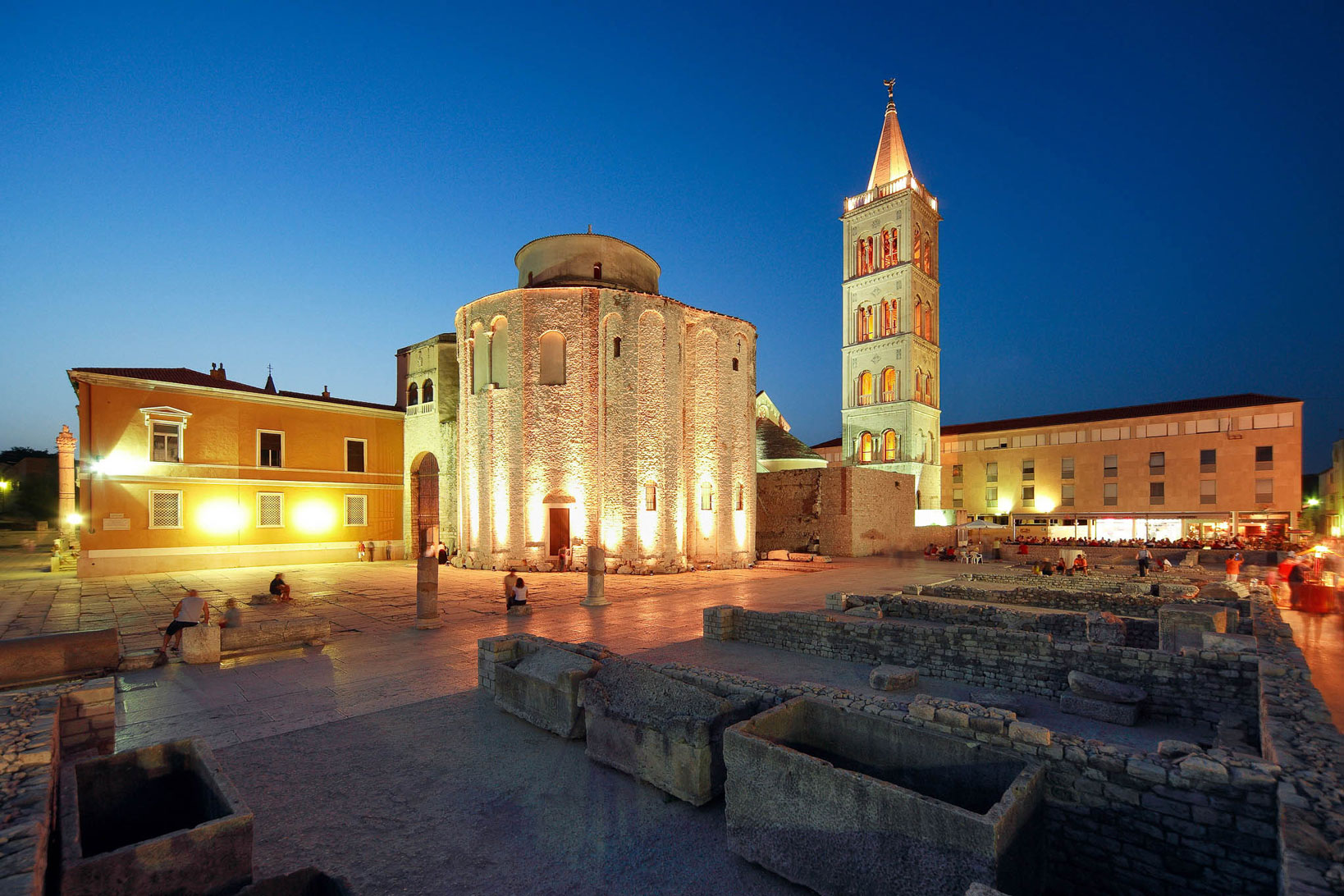

Riviera Zadar coast is predominantly high, steep and rocky, but abounds in hidden bays, natural pebble, sandy and rocky beaches worthy of blue flags.
Nin is an oasis of sandy beaches in total length of 8 km.
More intimate beaches can be found in city of Novigrad.
Riviera Zadar is surrounded by 5 National Parks (Paklenica, Kornati, Plitvice Lakes, Krka Waterfalls and North Velebit) and 3 Nature Parks (Telaščica, Lake ‘Vransk Jezero’ and Velebit).
During the summer you can enjoy clean sea, beautiful beaches and have good times while during the winter you can relax while sightseeing many cities various attractions.
City of Zadar sights
Saint Donat church
The most famous monumental building in Croatia, and also symbol of the city of Zadar.
It was built on the remnants of the Roman Forum and is unique in its construction techniques.
Today, the church space is used for various musical events due to outstanding acoustic characteristics.
Saint Stošija cathedral
The largest church in Dalmatia. This Romanesque building was built on two occasions during the 12th and 13th centuries.
The Forum
The main square of the Roman Iadera on which the entire public life of the city took place is located in front of St. Donat church and archbishop's palace.
It was built since the 1st century BC. until the 3rd century of our era.
Today, only the original pavement and stairs and two decorative monumental pillars have been preserved. One pillar is still in its original place where it served as a pillar of shame.
Fort Forte
It began to be built in 1567, and was completed almost in full in just a few years.
It was built on the site of the medieval suburb of Zadar - St. Martin suburb.
The fort was once separated from the city and the mainland by defensive channels.
Five Wells Square
It was made in 1574 at the time of defending from Turkish siege.
The square has a shape of an elongated irregular rectangle and is closed on three sides.
To this day, parts of the aqueduct that brought water directly from the Lake ‘Vransko Jezero’ have been preserved, and since this square with five wells has been renovated it is the most picturesque area in Zadar.
Kalelarga
The oldest street in the city of Zadar, as some claim it to be older than the city itself.
Kalelarga stretches from the National Square to the Forum.
Apart from being a symbol of the city, it is also a cult space for socializing, entertainment, processions and, as the rumour goes, the starting and ending point of the love relationships of many citizens of Zadar.


Pašman is an island located in the Zadar archipelago and is separated from the mainland by the beautiful canal of Pašman with dozen of smaller islands in it.
The surface of the island is 60 km², it has a 70 km long indented coastline and is one of Croatian larger islands.
There are eleven settlements on the island, the population of which is engaged in fishing and tourism.
The sea current in this area changes every six hours, which makes its sea the cleanest in the entire Adriatic.
Pašman is famous for its beautiful beaches and pine tree forests.
The north side of the island is the only one populated, while the settlements are small and typically Mediterranean, ideal for a quiet and relaxing vacation.
The south side of the island abounds in beautiful intact nature, beautiful coves and old fishermen houses overlooking one of the most beautiful group of islands in the Adriatic – Kornati.
The population of the island of Pasman is traditionally engaged in agriculture, fishing and, more recently, tourism.
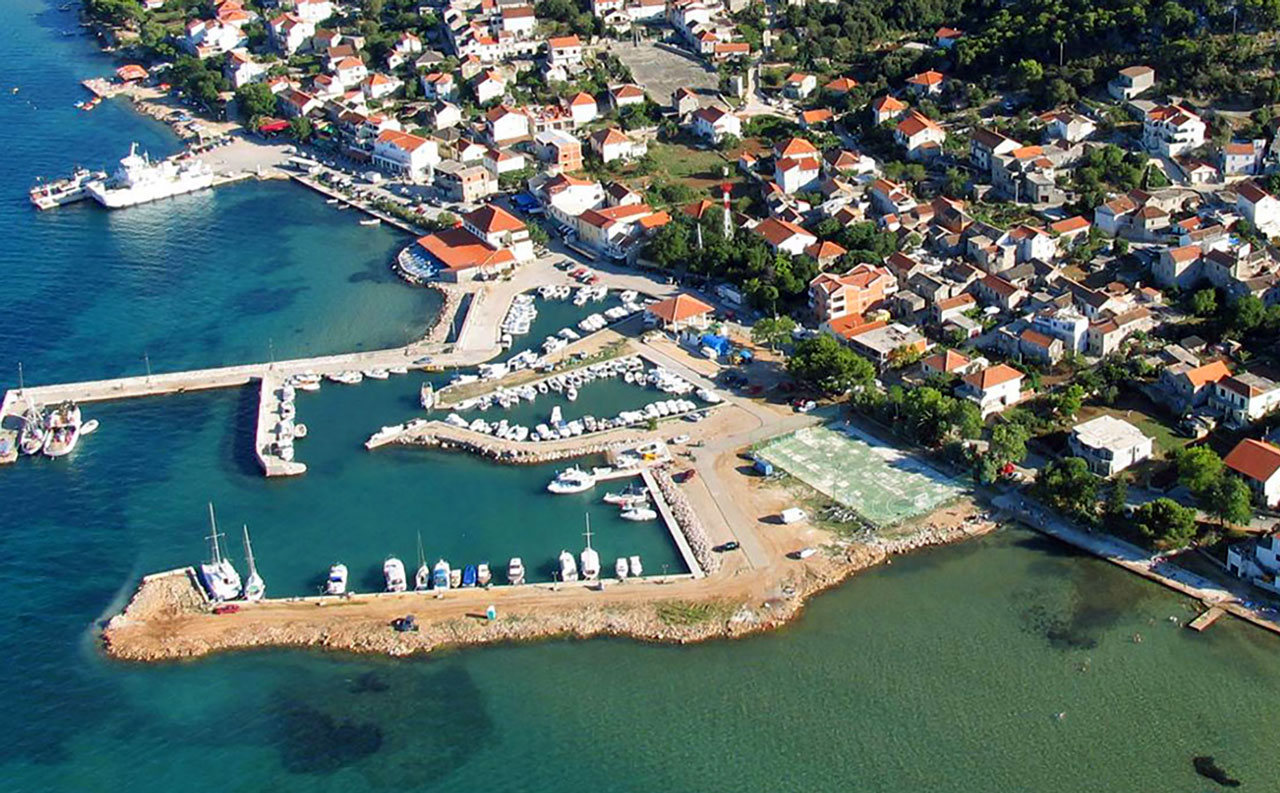

Recreation enthusiasts can enjoy on the footpaths and biking trails; we also recommend the hiking-biking tour to the hill of V. Bokolj which offers the view of neighboring islands, the Pašman canal and the Kornati.
The most important island center is Tkon, which is developing faster than any other settlement on the island because of its large harbor and quality connection to the mainland. The population calls this place “Kun”, but is also known as the “Door to Kornati”. Kraj is a beautiful place surrounded by vineyards and olive groves which stretches along two beautiful sandy beaches. It holds the gothic Franciscan monastery of St. Dujam from the 14th century with the image of the Madonna with baby Jesus from the 15th century, as well as the exponents’ museum which reveals the history of the island of Pašman.
The settlement called Pašman is located across a small island Babac in the Pašman canal and overlooks numerous uninhabited islands. The strongest currents appear right in the place between Pašman and Babac, which ameliorates the developments of the clam shells the harvest of which is one of the most important island activities.
The entire island of Pašman is rich with cultural monuments, some of which are the Benedictine convent on the Ćokovac hill and the Franciscan convent in Kraj.
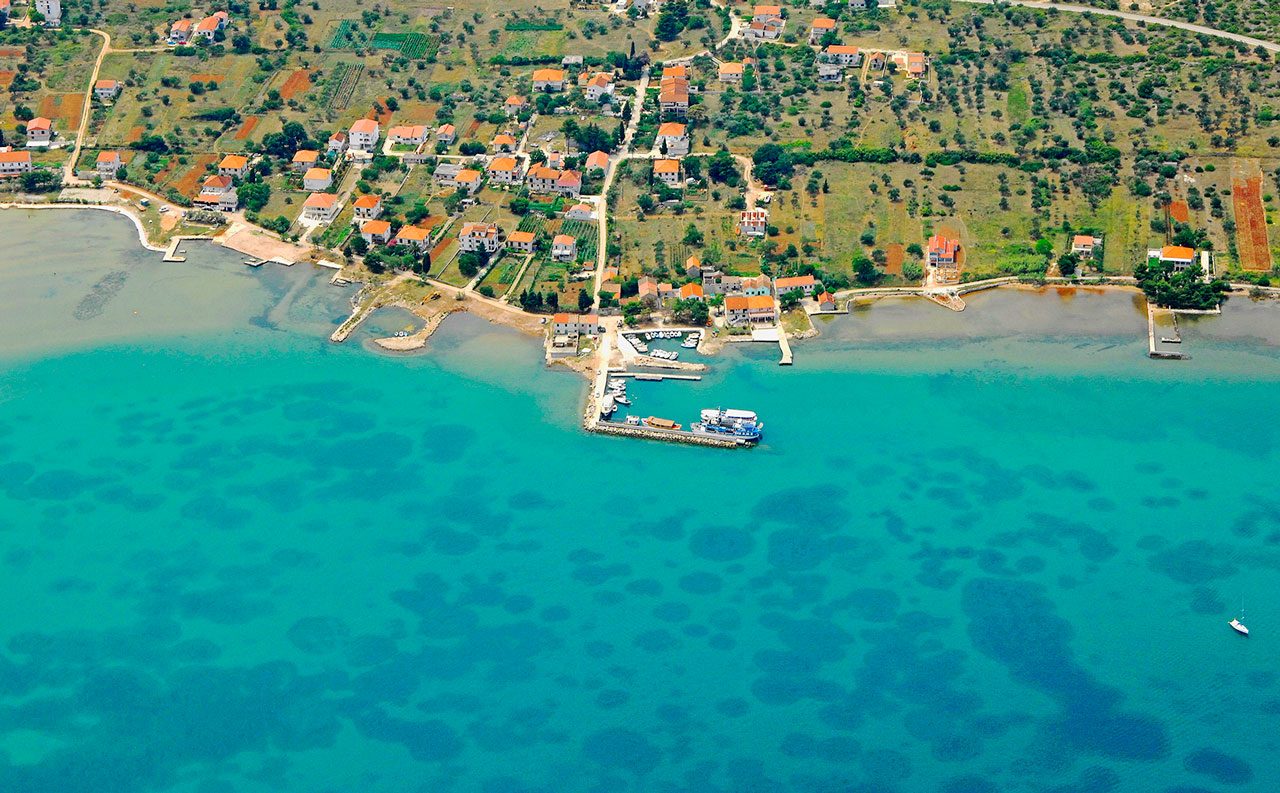

Mrljane - one of the places on the island of Pašman which belongs to the Zadar archipelago, and it is connected with city of Biograd with a regular ferry line.
You can check ferries traffic order by clicking on this link.
In Antique times this settlement was located at the foot of Semić hill, while today it is situated on the seashore, notable for its sand beaches.
Its residents have been engaged in agriculture and sailing since time immemorial, while tourism has become an additional occupation in recent times.
The nearby hill affords a lovely view of the Pašman Channel.
The beautiful sandy beach attracts more and more tourists every day, and the local people, who are traditionally known as excellent boat-builders, have since recently been engaging in nautical tourism.
Gastronomy


The traditional gastronomy of the island of Pašman and all its localities includes the preparation of several specialties that are based on light food - on fish and on vegetables seasoned with the high quality olive oil and Dalmatian spices such as rosemary or the bay-leaves, giving a wonderful taste to these Dalmatian dishes.
Out of the specialties that might gladly be served to you by the locals, we will point out only a few: the Dalmatian prosciutto ham, dried in the Northeastern wind, known as the Bura wind, which gives it a specific taste. Then there is the salty goat cheese, pašticada, a Dalmatian specialty, roast lamb, potato salads and mixed salads, and excellent ice creams.
The wealth of all sorts of fresh fish prepared in various ways: the brodetto or fish stew, grilled fish, the octopus prepared under a baking lid, hundreds of grilled dishes and so on is what will keep you coming back to our island.
We invite you to come to our island and surrender yourself to an indulgence in truly homemade food, prepared in the traditional Dalmatian way.
In our restaurants and Dalmatian taverns, known as konobas, you will experience the delight of a family atmosphere, the warmth of the polite locals who will prepare the ever so many Dalmatian specialties ranging from fish, crabs, shellfish, other fish food delicacies, to meat dishes, etc, in the best possible way, with homegrown olives and homemade olive oil – everything of top-quality, and, above all, natural and authentic.
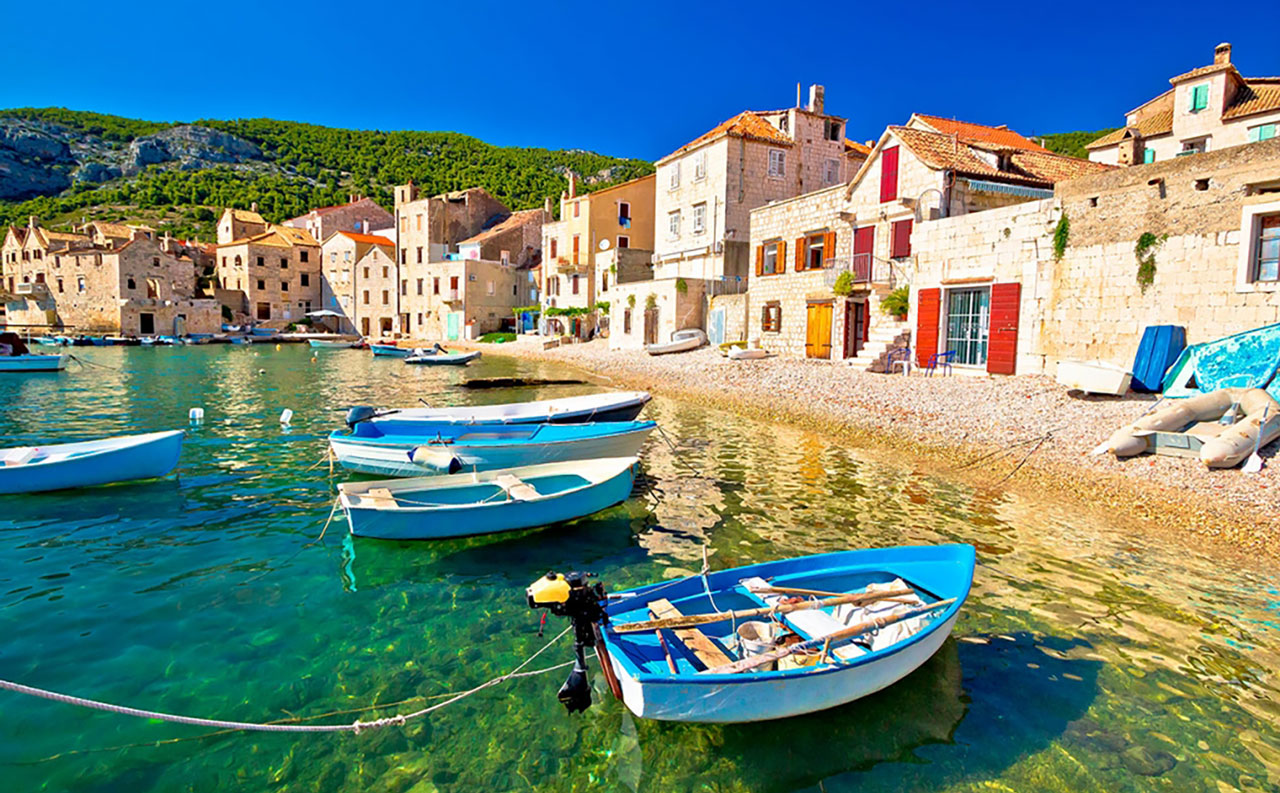

While staying in one of the numerous tourist settlements or towns on the Zadar Riviera do not miss exploring the surroundings and getting to know the beauty of north Dalmatia.
Take a boat trip on the islands of Ugljan and Dugi Otok.
Get to see various places on the islands and enjoy panoramic rides to smaller islands and coves.
Visit the historical city of Zadar, which is special for all those who love historical monuments and cultural heritage.
Also, visit national parks Kornati and Paklenica.
NP Kornati is to be visited by boat: explore this wonderful island group that will leave you breathless.
NP Paklenica is a unique area made by touch of sea and mountain, rich in forests, canyons and numerous caves, suitable for alpinism.
Nature Park Vransko Jezero: the only natural unspoilt bird habitat with a special ornithological reserve and also the largest natural lake in Croatia.
Nature Park Telašćica on island of Dugi Otok is an excursion site rich in marine and land flora and fauna such as dolphins, bats and endemic birds.
Telašćica is the only nature park on the sea in Croatia. Within the park there is a lake Mir 146 m above the sea level.
Mountain Velebit is also a Nature Park - Tulovian beams on the canyon of Zrmanja River are especially interesting and also the rock of Anić Kuka.
Kornati
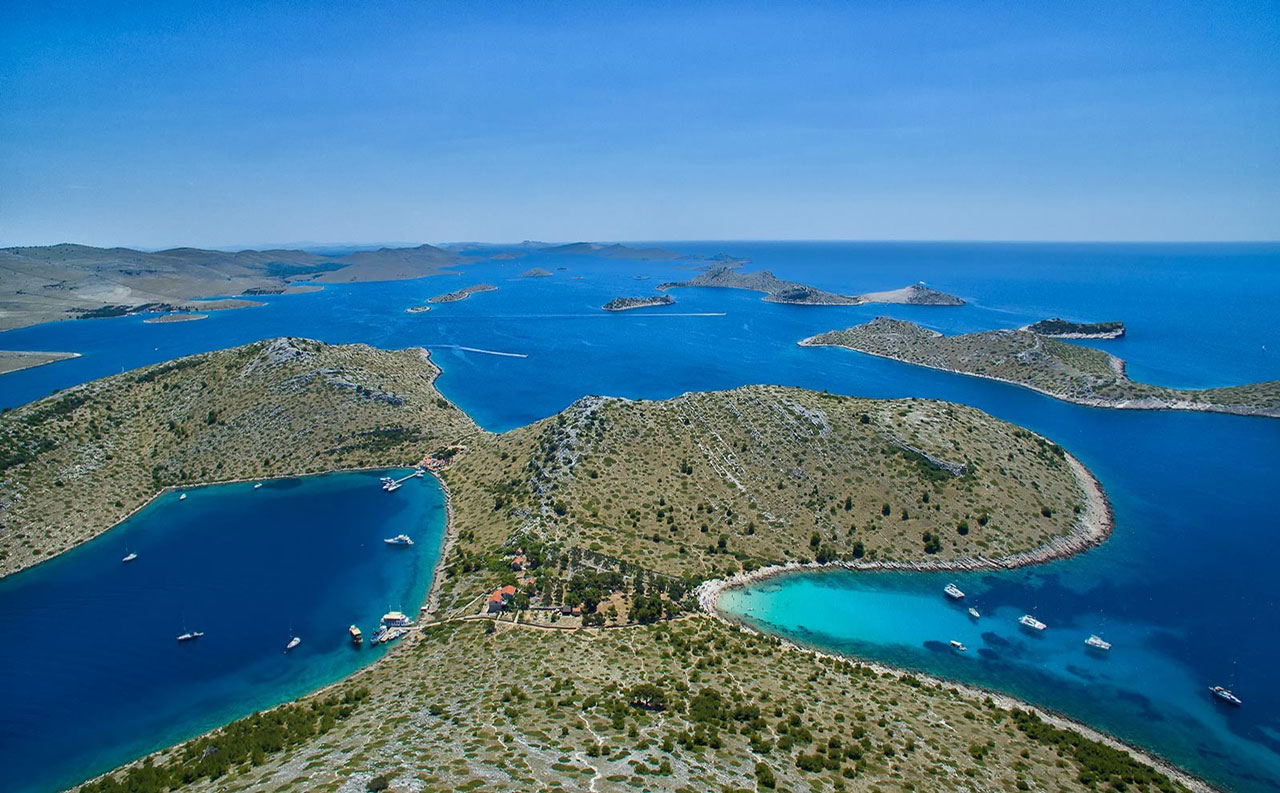

Stretching along the central part of the Croatian Adriatic, are the Kornati islands.
With their immense natural beauty, diverse coastlines, and preserved marine ecosystem, most of the Kornati islands were declared a National park in 1980.
National park Kornati sizes about 220 km² which consists of 89 islands, islets and reefs. National park Kornati was named after the biggest island in the group - Kornat.
Vegetation on the islands is minimal, giving the islands a bald look, however, nature still thrives with plant life on the rocks.
Crystal clear water uncovers all kinds of reefs, shellfish and many species of fish below the surface.
The Kornati islands were populated in prehistoric times as is confirmed by findings of stone hatchets at the bottom of the hill Padinka on the island of Kornat.
The Kornati islands were a frequent target for invaders and thieves, from the Romans and the Venetians to the aristocracy from Zadar.
Although today the Kornati islands are only populated during the summer months, old field and fishing houses spread out in secluded inlets on the Kornati islands, give away the presence of their owners.
There is no electricity or fresh water springs on the islands.
The Kornati islands are a real heaven for yachtsmen, divers and all those who enjoy the solitude of untouched and the magnificence of nature.
There are about 20 restaurants on the Kornati islands which serve fish specialities.
You can get to the Kornati islands by private boat (your own or rented) or by organised boat excursions offered by tourist agencies. For more information you can visit the public bureau „Nacionalni Park Kornati “in Murter. The park is located about seven nautical miles from the island of Murter.
Telaščica
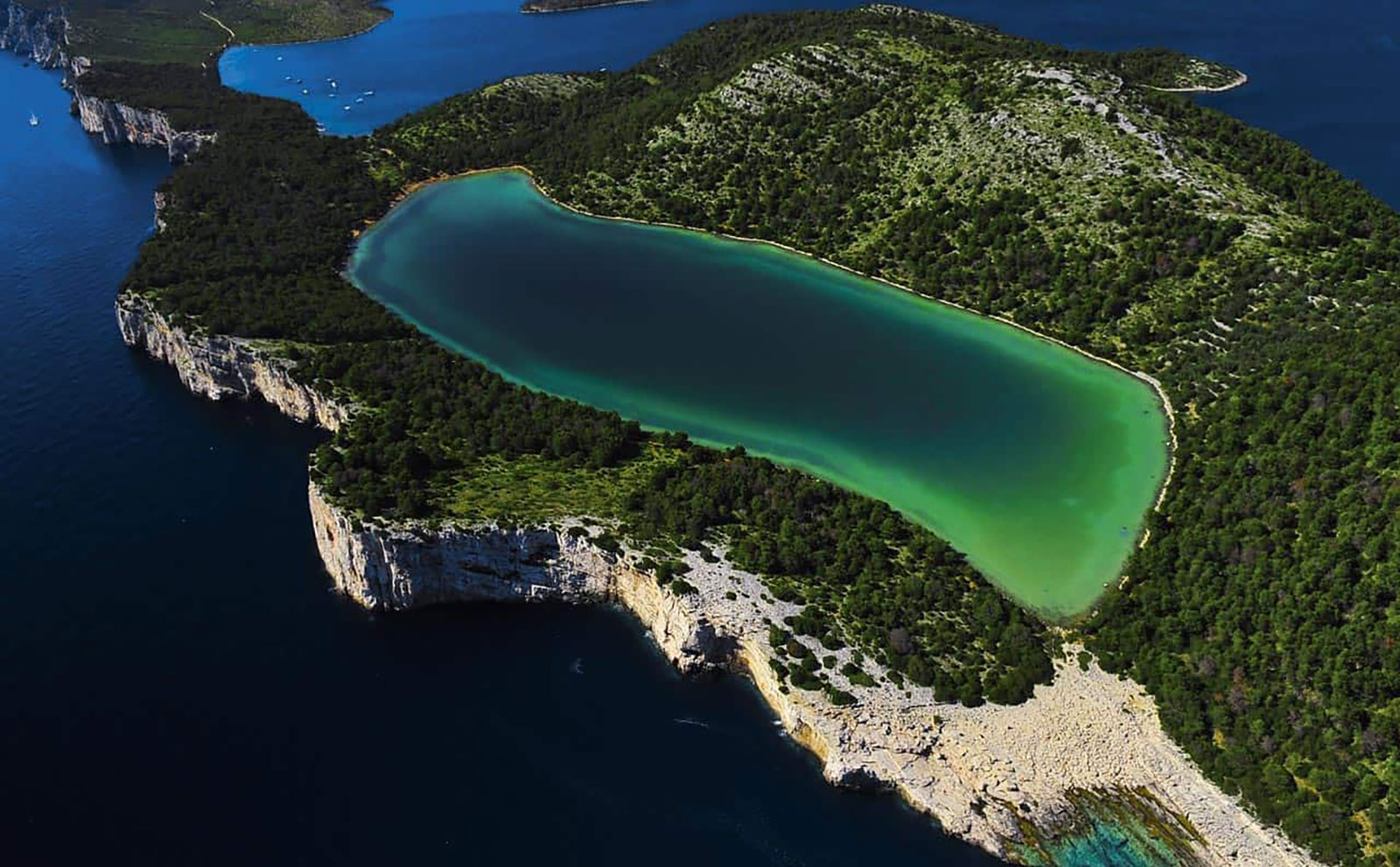

Telašćica is a 10km long bay, which was up until 1988 a principle part of the National Park Kornati. Today it is a nature park on the southeast coast of Dugi Otok, which includes the highest peak Grpašćak – 161m high, and the salt lake Mir.
Telašćica is one of the most beautiful and largest bays in the Adriatic Sea. It is surrounded by 13 islands and islets, and 6 islets within the bay itself.
It is also a well know shelter for many types of floating vessels.
The north-eastern side of the bay is completely bare, without vegetation, while the south-western side is full of thick forests of pine, olive and fig trees.
From the Tripuljak bay, via a five minute path, you can reach the Mir Lake, which has an area of 230,000 m², and a depth of up to 10m. The changing of the tides in the lake is an interesting phenomenon, which is closely connected to the changing of the tide in the sea - the lakes changes tides as the sea, with a few hours difference.
Telašćica has been inhabited since ancient times - remains from the Palaeolithic age testify to it (remains in the town Sali, roman remains at Mala Proversa, and the old Croatian pre-roman church at Dugopolje).
The steep cliffs are very impressive, which rise above sea level to 166m, and shelter the bay from the open sea.
There is an abundance of Mediterranean vegetation in the park, over 400 plant species, with numerous rare plants.
The wild life is also very rich. Over 250 plant and 300 animal organisms live in the sea, which include the sea sponge, and the rare red coral.
In the area of the Park, there are a few taverns, where you can try traditional specialities. They are located on the island Katina, and the Mala Proversa, Mir and Magrovica bays.
Dugi Otok is connected to the mainland very well, with ferry lines (Zadar-Sali-Zaglav).



